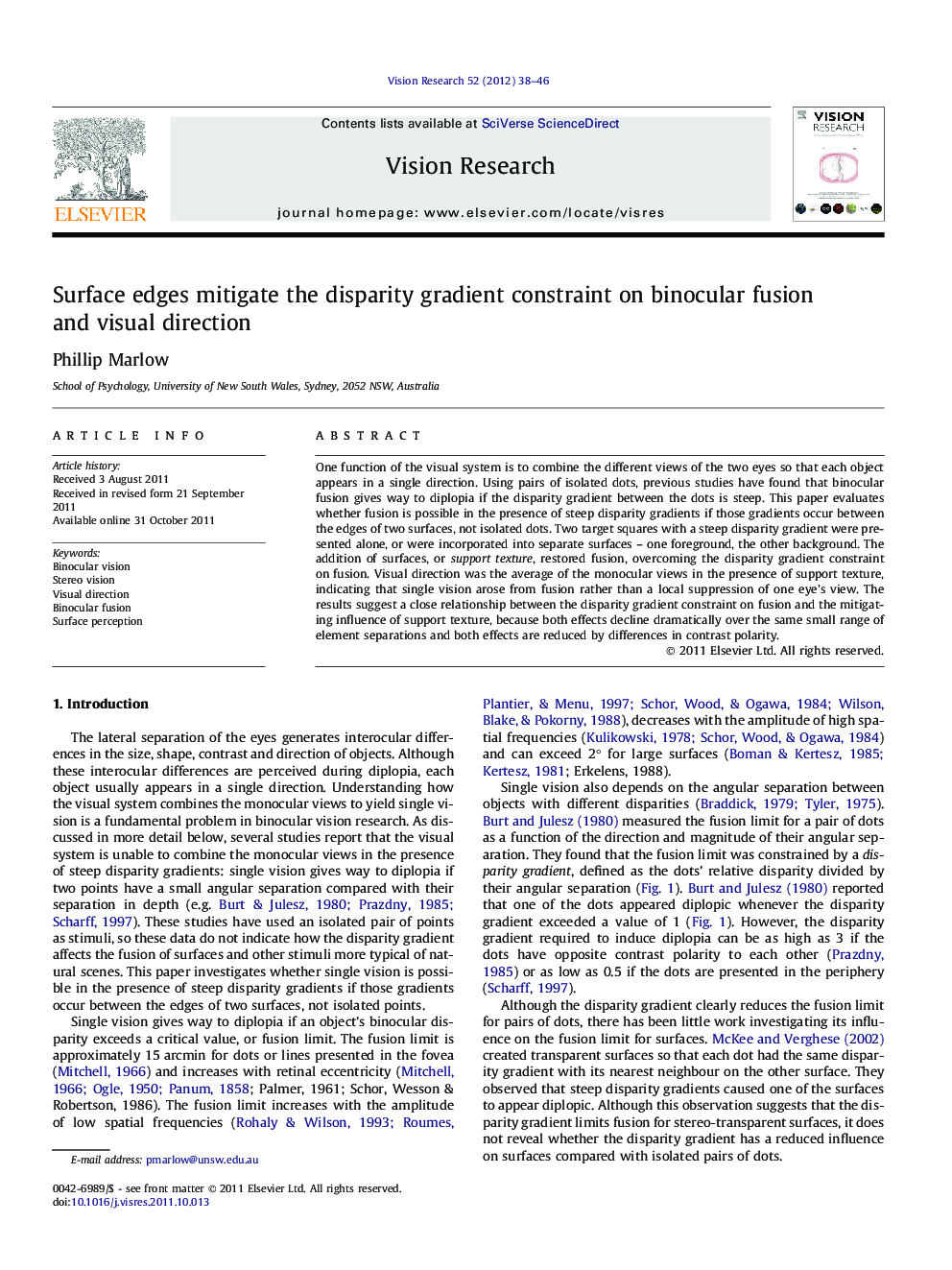| Article ID | Journal | Published Year | Pages | File Type |
|---|---|---|---|---|
| 4034086 | Vision Research | 2012 | 9 Pages |
One function of the visual system is to combine the different views of the two eyes so that each object appears in a single direction. Using pairs of isolated dots, previous studies have found that binocular fusion gives way to diplopia if the disparity gradient between the dots is steep. This paper evaluates whether fusion is possible in the presence of steep disparity gradients if those gradients occur between the edges of two surfaces, not isolated dots. Two target squares with a steep disparity gradient were presented alone, or were incorporated into separate surfaces – one foreground, the other background. The addition of surfaces, or support texture, restored fusion, overcoming the disparity gradient constraint on fusion. Visual direction was the average of the monocular views in the presence of support texture, indicating that single vision arose from fusion rather than a local suppression of one eye’s view. The results suggest a close relationship between the disparity gradient constraint on fusion and the mitigating influence of support texture, because both effects decline dramatically over the same small range of element separations and both effects are reduced by differences in contrast polarity.
► Measured visual direction in the presence of steep disparity gradients. ► Compared the influence of disparity gradients on isolated dots and surfaces. ► Disparity gradients have a reduced influence on fusion for surfaces compared with dots. ► Visual direction consistent with fusion, not just a local suppression of one eye’s view.
